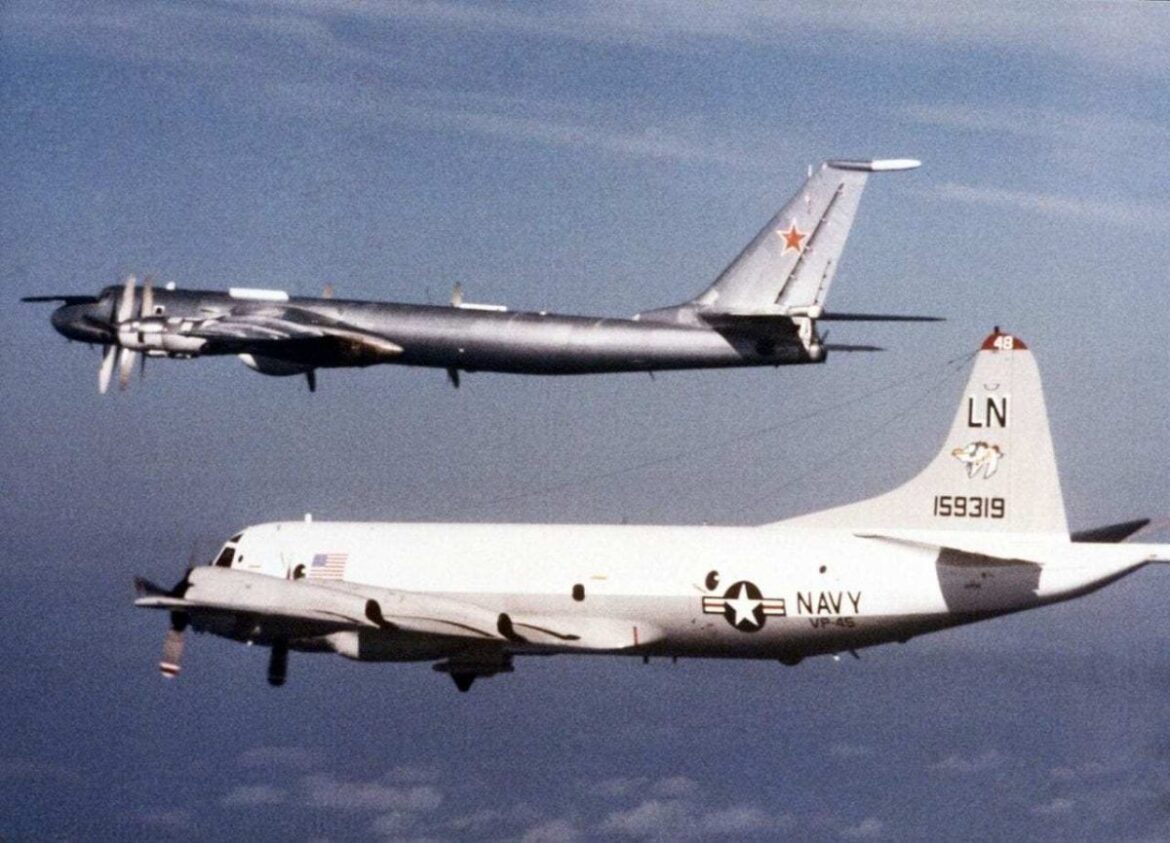‘We had been conducting operations at low level (200–300 feet) in the Norwegian Sea when we received a message over our broadcast that Bears would be transiting our area from the Murmansk region,’ said Ross Hall, former P-3 Orion NFO.
Sometime after 2040, the Russian Air Force will decommission its fleet of Tupolev Tu-95 (NATO reporting name: Bear) strategic bombers, marking the end of the gigantic aircraft’s nearly 100-year service life.
With four engines and a length of 164 feet, the Tu-95 is a turbo-prop bomber that is capable of flying over 8,000 miles without refueling.
The Tu-95 may be the loudest aircraft on the planet since each of the Bear’s eight four-blade propellers breaks the sound barrier when they rotate, according to Military History Now. Fighter pilots dispatched to intercept Bears have stated that they can clearly hear the planes’ distinctive drone above the noise of their own aircraft. Because bears make such a lot of noise, US submarines and underwater sonar systems can identify them.
‘Bears could be detected by SOSUS [SOund SUrveillance System that provides deep-water long-range detection capability. SOSUS enjoyed tremendous success during the Cold War tracking submarines with their faint acoustic signals. SOSUS consists of high-gain long fixed arrays in the deep ocean basins],’ Ross Hall, former Naval Flight Officer (NFO) on P-3 Orion anti-submarine and maritime surveillance aircraft, says on Quora.
‘We even had the pleasure of intercepting a Bear in our trusty P-3.
‘The older P-3s had a service ceiling of 36,000 feet. Our relatively new P-3C (at least it was new at that time) had a service ceiling of 39,000 feet.’
Hall continues;
‘We had been conducting operations at a low level (200–300 feet) in the Norwegian Sea when we received a message over our broadcast that Bears would be transiting our area from the Murmansk region.
‘We did some quick calculations and decided we had a shot of intercepting them. We climbed from 300 feet to our service ceiling of 39,000 feet, and we estimated we were in front of the Bears. Our speed was probably in the vicinity of 330–350 knots.
‘Sure enough, our observers spotted the Bears behind and above us. They passed us fairly quickly. We estimated they were probably around 42,000 feet and probably in excess of 400 knots.’
Hall concludes;
‘In terms of noise… it was even noisy enough in our P-3, that I routinely wore earplugs under our headset. As I recall, the ambient noise at my station was approximately 95 dB. Over the course of a 9–12 hour flight, that can be quite a problem. I imagine the noise inside the Bear would be significantly worse.’
Photo by U.S. Navy

